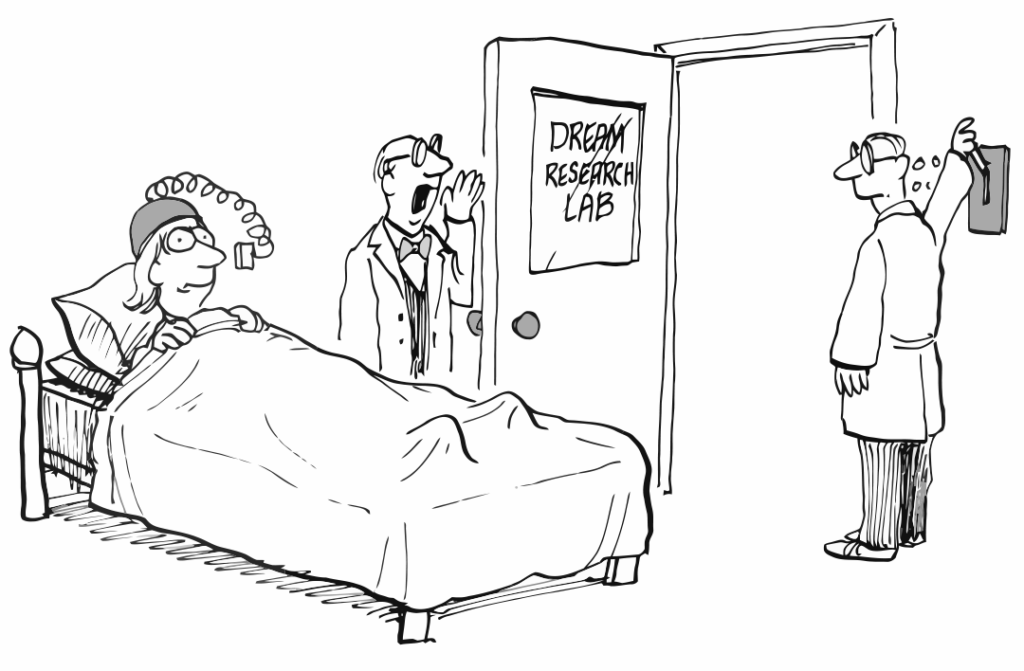We get it, you see a lot of medical newsletters, so hear us out. Twice a month, we’ll highlight important medical news sprinkled with witty commentary, fun facts, giveaways, and more… because learning should be fun! Subscribe to receive the Morning Report directly.
Can We Throw Out the Scale?
LONGEVITY LEARNINGS

We enjoy a hearty debate. Did Tony Soprano die in the finale? Could Ferris Bueller really have completed all those activities before dinner? Can a patient with obesity still be in good health?
Two researchers say most likely to that last one. They combed through a mountain of literature on dieting, exercising, and mortality and examined >200 meta-analyses and single studies. That’s enough data to make Steve Kornacki don his khakis and election-night game face.
The review suggests intriguing claims about obesity management:
- Moderate or intense exercise can reduce or eliminate obesity-related risk of mortality
- Exercise, regardless of any weight loss, improves most markers of cardiometabolic risk
- Weight loss—“intentional” or not—is not always associated with reduced risk of mortality
- Increasing exercise led to greater reductions in mortality risk more frequently than “intentional” weight loss
- Dieting often leads to weight cycling, or yo-yo dieting, which is linked to increased mortality
One of the authors noted that “sedentary, obese men and women who begin to exercise and improve their fitness can lower their risk of premature death by as much as 30% or more, even if their weight does not budge. This improvement generally puts them at lower risk of early death than people who are considered to be of normal weight but out of shape.”
A “weight-neutral” approach to obesity management
The researchers recommend a new paradigm for obesity management that focuses on “increasing physical activity and improving cardiorespiratory fitness.” Studies have shown that exercise alone typically does not lead to much, if any, weight loss (raise your hand if you reach for an extra snack after a workout), but apparently, that’s okay. The studies reviewed suggest that exercise may lead to a greater reduction in visceral fat than energy-restriction weight loss alone and that it improves markers of cardiometabolic health just as well as weight loss programs. Best of all, physical activity has been shown to be more sustainable.
Unfortunately, the study did not address the amount of physical activity needed to improve mortality risk in people with obesity. Nevertheless, the message is clear: Encourage patients to get moving even if their efforts are not reflected on the scale or in the mirror.
Aspirin for Primary Prevention of CVD/CRC—Not So Fast
CARDIO CORNER

By now, you’re probably aware of the big news that hit since our last newsletter. No, we’re not talking about the fresh new single Adele dropped after six long years of hibernation—but it is fire. Instead, we’re talking about the United States Preventive Services Task Force’s (USPSTF) new Aspirin Use to Prevent Cardiovascular Disease: Preventive Medication recommendation (albeit, still in draft form). Based on emerging information on the net benefit of aspirin use, this 2021 recommendation marks an about-face from the 2016 version.
Recommendation updates:
- Patients 40-59 years old without cardiovascular disease (CVD) and with a ≥10% ten-year risk of CVD: Initiation of a low-dose aspirin for primary prevention of CVD should be an individual decision; the greatest benefit is likely in individuals not at increased risk for bleeding and agreeable to taking aspirin daily (Grade C recommendation)
- Patients ≥60 years: Do not initiate low-dose aspirin for primary prevention of CVD (Grade D recommendation)
- More data are needed to assess the benefit of low-dose aspirin for primary prevention of colorectal cancer (CRC)
The one piece of advice you can still hang your stethoscope on is that daily low-dose aspirin remains the way to go for many patients who have already experienced a heart attack or stroke.
What should primary prevention of ASCVD look like?
Let’s not forget that atherosclerotic cardiovascular disease (ASCVD) risk can be mitigated in other ways. As Frank Domino, MD, host of Pri-Med’s Frankly Speaking podcast, aptly notes, “You can reduce ASCVD risk in many ways. For example, you can encourage patients to walk at least 8,000 steps per day; try out high-intensity interval training (HIIT) or incorporate 20 minutes of moderate intensity exercise into their day. They can also reduce their weight out of the obese BMI range; begin a diet high in non-starchy vegetables, fresh fruits, fish, and vegetable oils; and stop smoking.”
And the Winner Is…
Thank you all for submitting your cartoon caption contest ideas. They were fantastic. This month’s winner is identified below!

“Stop! Wrong Switch!”
Congratulations to Karen Johnson, NP, from Aberdeen, MD, for penning this excellent caption!
Majority of Americans on Flu Vaccine: “No Thanks”
INFECTIOUS FINDINGS

Scientists have warned of the potential severity of the upcoming flu season as loudly as an inebriated fan shouting “It’s in the hole!” after a pro golfer hits a drive. But according to a new study, more than half of all Americans still plan to throw caution to the wind this flu season.
In a recent online survey from Wakefield Research on behalf of the American Heart Association (AHA), 1,000 US adults were asked about their intentions regarding flu vaccination this year.
- 60% plan to delay or skip flu vaccination
- However, nearly all who received the shot last year will get in line again this year
- Only 26% reported that COVID-19 played a role in their flu vaccination decision this year
- Only 6% of respondents correctly answered eight out of eight basic questions on influenza (only 73% knew the flu shot can’t cause the flu); the younger generations appeared less knowledgeable on this subject than Baby Boomers
This study shows that more work needs to be done to vaccinate Americans against the flu this season, and ideally before the last leaf hits the ground. The CDC urges everyone (≥6 months old) to get their shot by October 31 for the strongest level of protection. Happy Halloween!
Potential Issues to Iron Out in Anemia Screening and Diagnosis
HEM HAPPENINGS

No one is 100% accurate at work—unless you’re Lt. Columbo solving a murder—but an accuracy rate of 73.5% is not ideal when it comes to diagnosing iron deficiency anemia (IDA), even in a challenging case. A new study involving >350 US primary care physicians (PCPs) recently revealed this suboptimal percentage as well as other interesting findings.
The PCPs in the study (55% men; mean of 11 years of experience) participated in a 2019 survey in which they answered questions based on patient vignettes related to screening for anemia, interpreting iron lab results, and referring patients with new-onset IDA for diagnostic evaluation.
How did your peers in primary care stack up?
Key findings from the PCPs’ responses to the hypothetical cases suggest the overuse of screening for IDA, even though evidence does not support the use of routine screening with CBC for healthy nonpregnant adults. In contrast, the survey shows that bidirectional endoscopy (vs colonoscopy alone) is underused, despite recommendations from the guidelines. And as noted in the opening, many respondents fell short when it came to interpreting iron lab results; 26.5% did not correctly identify IDA in a case of “borderline low” ferritin level (40 ng/mL) and low transferrin saturation (2%).
Oh, and one more thing: The relatively high percentage of lab misinterpretations is particularly concerning because it may lead to delays in diagnosis or misdiagnosis of IDA and, potentially, gastrointestinal tract cancers, which occur in 1% to 10% of adults with IDA.
COVID-19 Rapid-Fire Updates
COVID QUICK HITS

- U.S. readies plan to vaccinate kids ages 5-11 against COVID-19
- Perinatal COVID: More answers needed on preterm birth, maternal mortality
- AZD7442 reduced risk of developing severe COVID-19 or death in TACKLE Phase III outpatient treatment trial
- CDC study shows Pfizer Covid vaccine is 93% effective against hospitalization in 12- to 18-year-olds
- F.D.A. to allow ‘mix and match’ approach for Covid booster shots
- F.D.A. authorizes Moderna and Johnson & Johnson booster shots
Interested in more healthcare news? Here are some other articles we don’t want you to miss:
- Paracetamol use during pregnancy — a call for precautionary action
- Sodium reduction
- The carbohydrate-insulin model: a physiological perspective on the obesity pandemic
- FDA permits marketing of e-cigarette products, marking first authorization of its kind by the agency
- Diet-induced fasting ghrelin elevation reflects the recovery of insulin sensitivity and visceral adiposity regression
- OCT study shows effect of eye rubbing in children’s corneas
Morning Report is written by:
- Alissa Scott, Lead Author
- Aylin Madore, MD, MEd, Author and Editor
- Shira Page, RN, NP, Author and Editor
Would you like to share your feedback with Morning Report? Drop us an email at morningreport@pri-med.com and let us know how we’re doing.
Please note that the summaries in Morning Report are intended to provide clinicians with a brief overview of an article, and while we do our best to select the most salient points, we ask that you please read the full article linked in each summary for clarification before making any practice-changing decisions.
Enjoying Morning Report? Subscribe & Share It With Your Colleagues!
Is Morning Report for you? It is if…
You’re someone who needs quick-hitting, accurate medical news, and you’re a fun and witty healthcare professional who wants your news with some flare.
You don’t just need to know about the latest metabolism study–you need to know how it parallels an Alanis Morissette hit. If you’re reading about acupuncture treatment, you need us to skip the needle puns and get right to the point. We keep things simple, but when we do get into the scientific weeds, we always remind you to check for ticks.
Subscribe to receive the Morning Report directly to your inbox every other Saturday.



